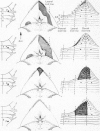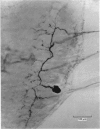Abstract
A study of the head ganglion of the leech was made to compare the properties of specific sensory cells in this ganglion with those of homologous neurones in the segmental ganglia. 1. In the head ganglion, cells were identified that had electrical properties, sensory modalities and adaptation properties similar to those of touch (T), pressure (P) and nociceptive (N) cells in the segmental ganglia. The cell bodies of these neurones were situated in characteristics positions that could be correlated with those in the segmental ganglia. Several lines of evidence suggested that they were primary sensory neurones. Fewer T, P and N neurones were identified in the head ganglion than would be expected from its six constituent segmental ganglia. 2. The receptive fields of identified T, P and N cells were situated on the external surface of the head and the interior of the mouth with considerable overlap. They were generally smaller in size than those situated on the main part of the body. The receptive fields were also displaced anteriorly so that some of them were situated in segments anterior to those of the innervating cells. 3. The morphology of the sensory cells in the head ganglion was studied by intracellular injection of horseradish perioxidase. The general branching characteristics of the cells and the structural appearance of their processes resembled those of homologous cells in the segmental ganglia. However, the routes taken to the periphery by some of the cells were not constant from head ganglion to head ganglion. This variability was confirmed by electrophysiological evidence, and differed from the constancy seen in segmental sensory cells.
Full text
PDF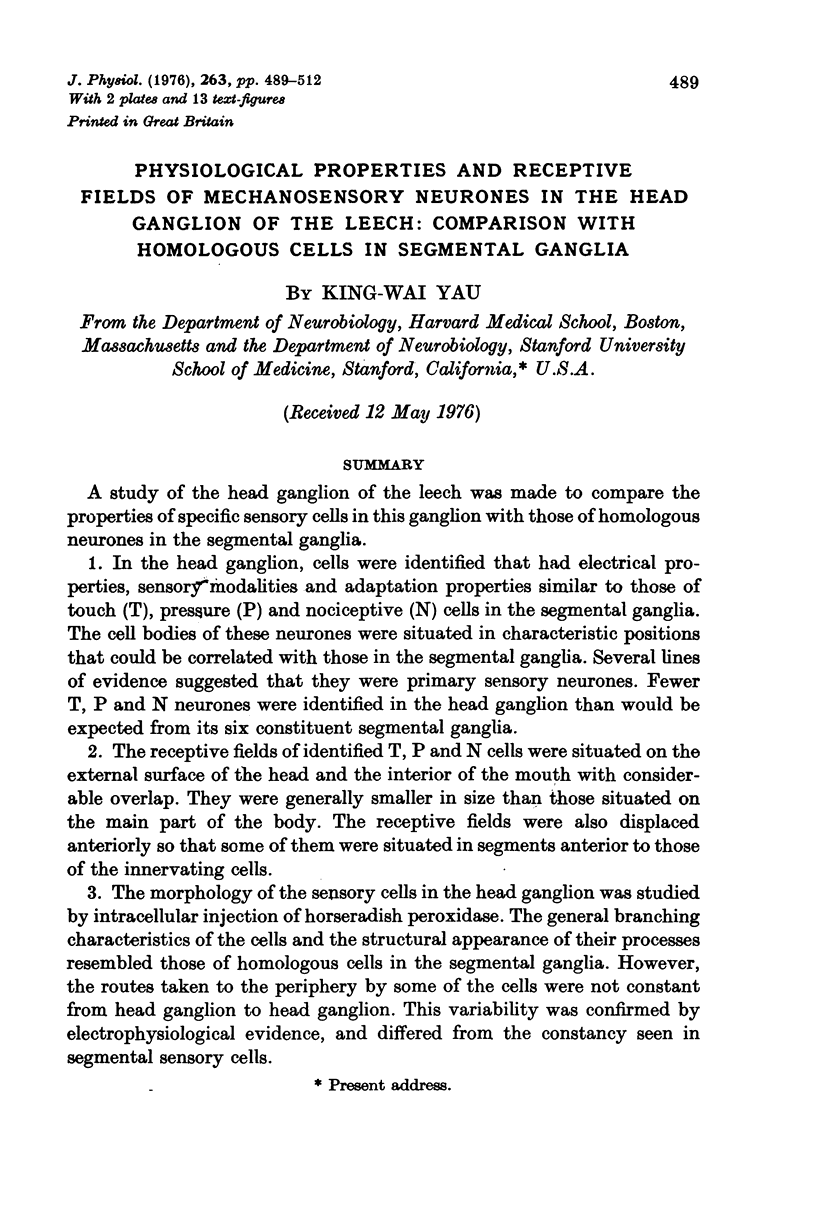
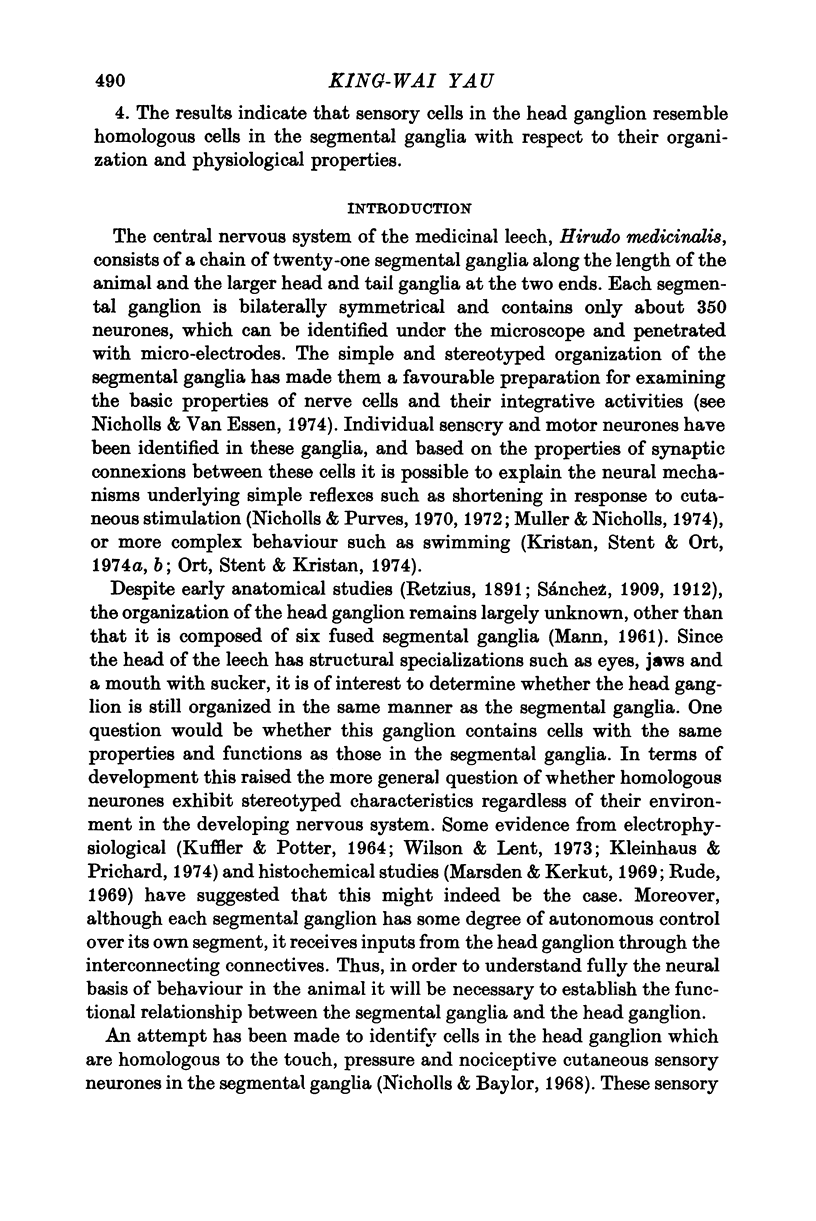
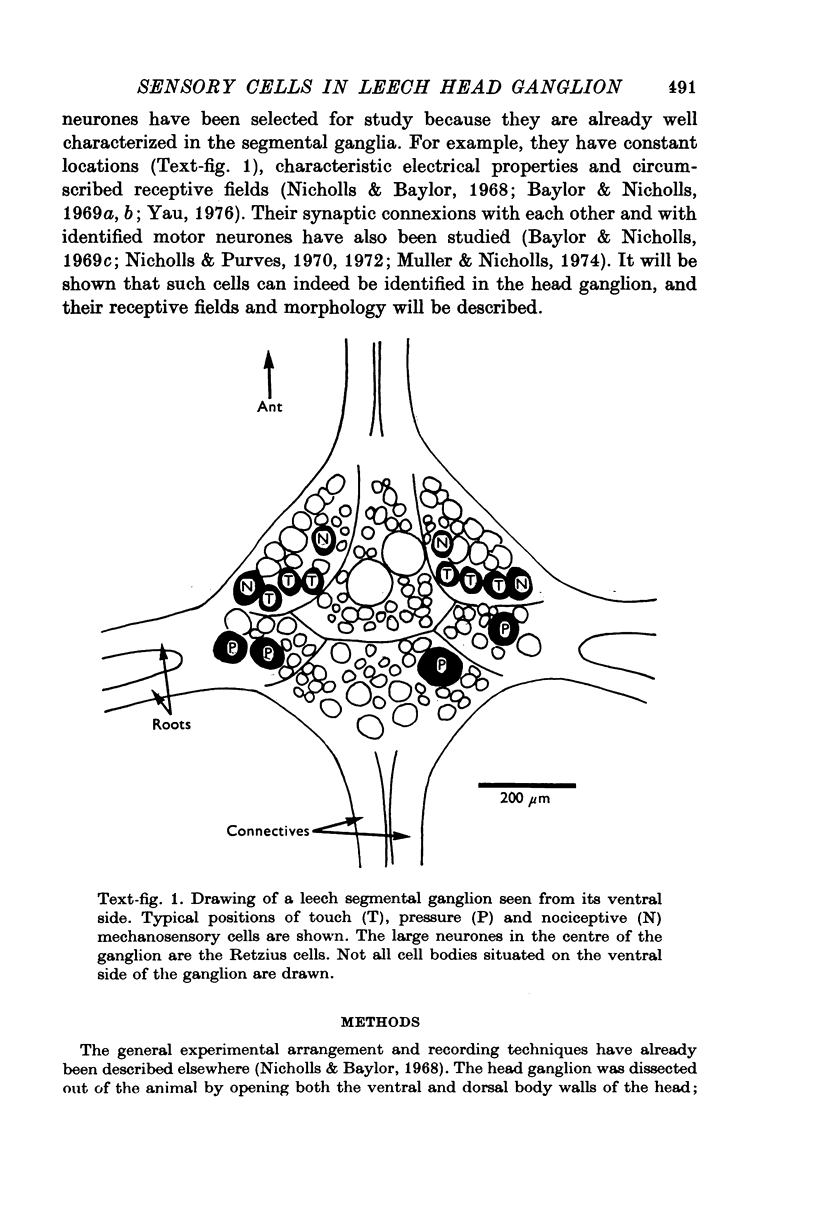
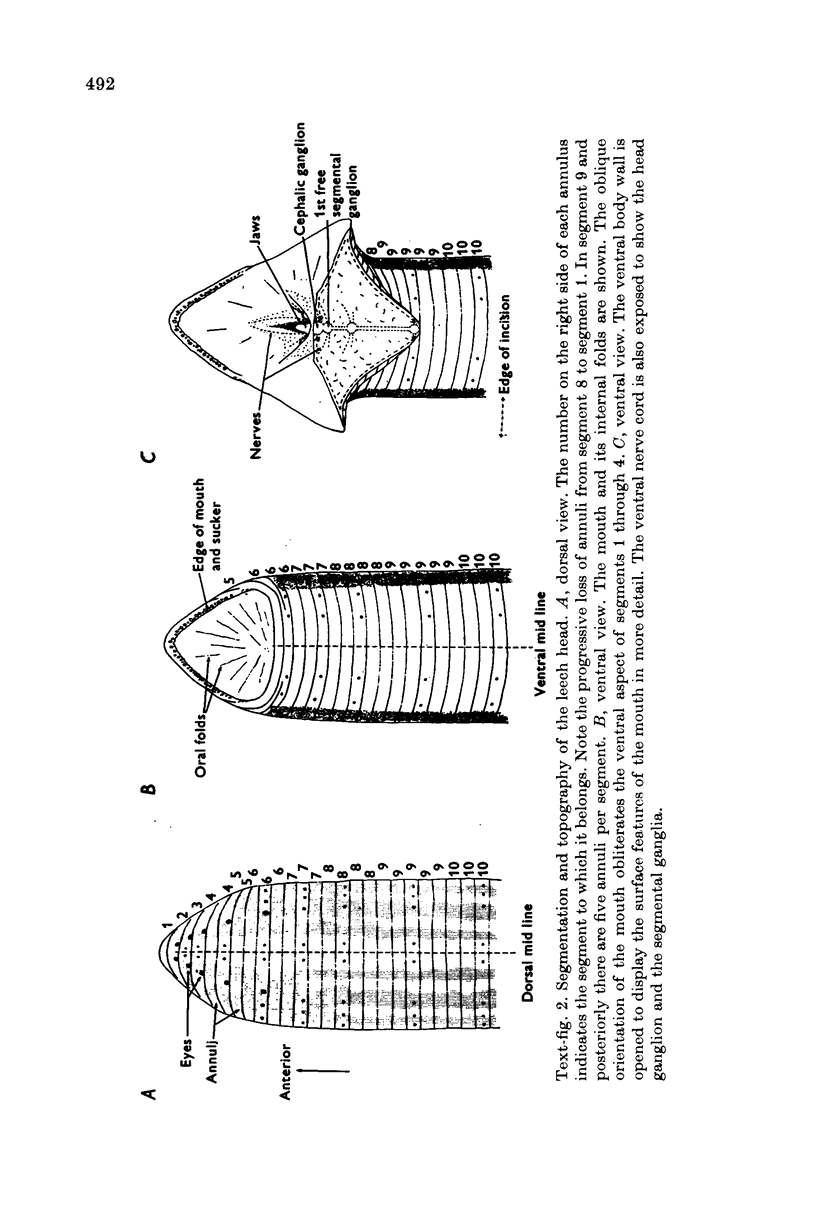
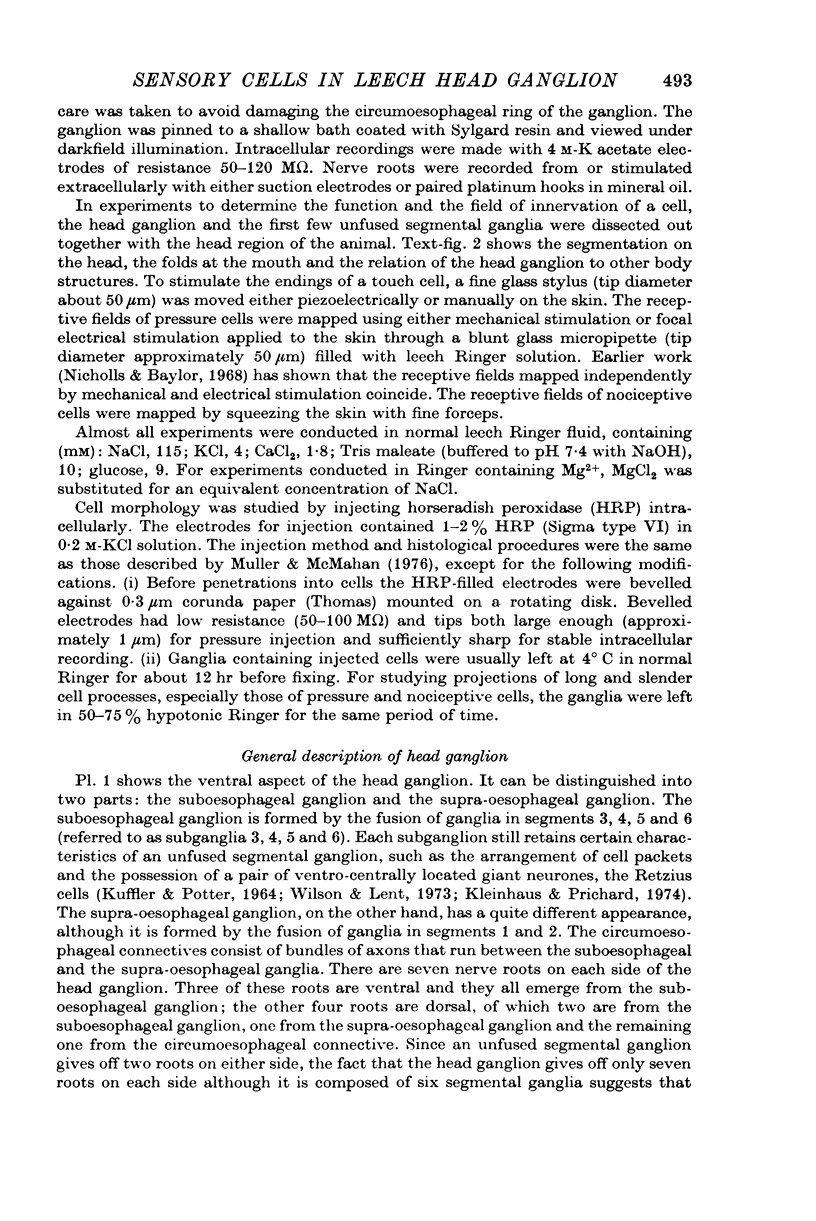

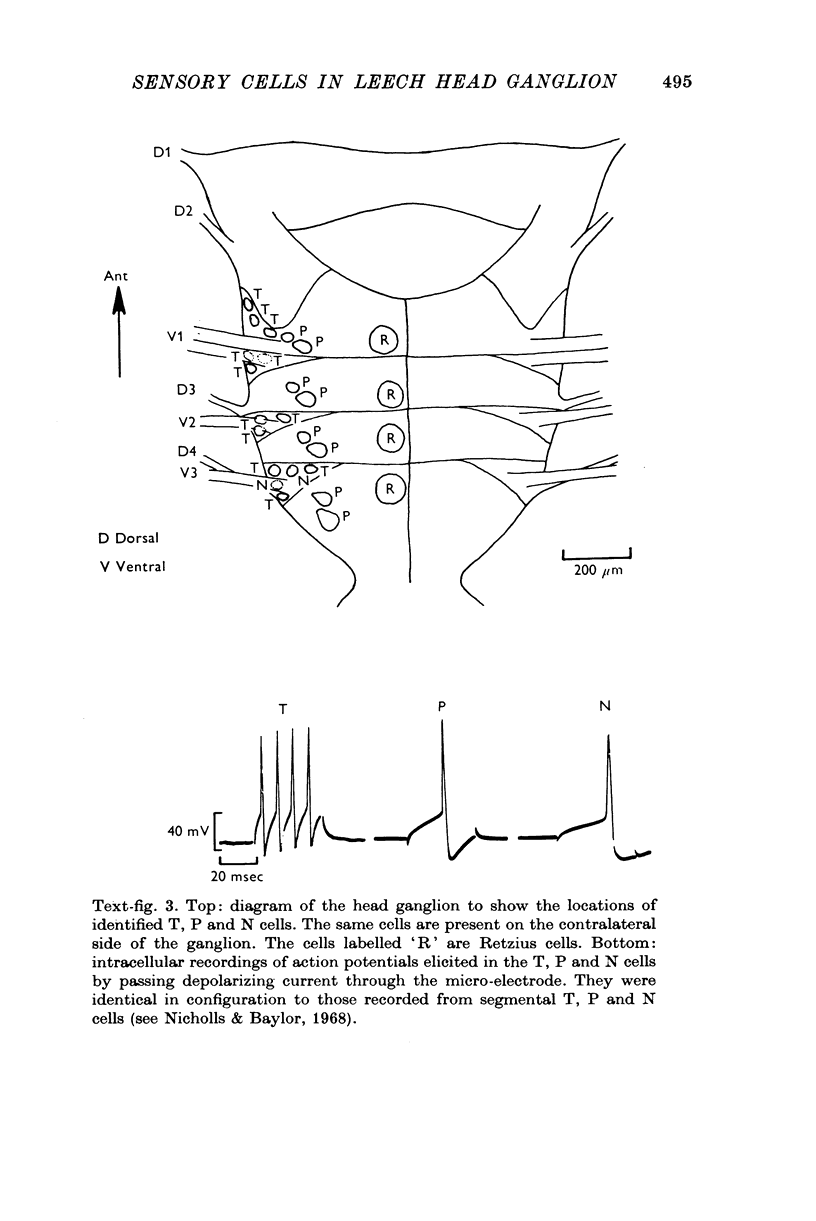
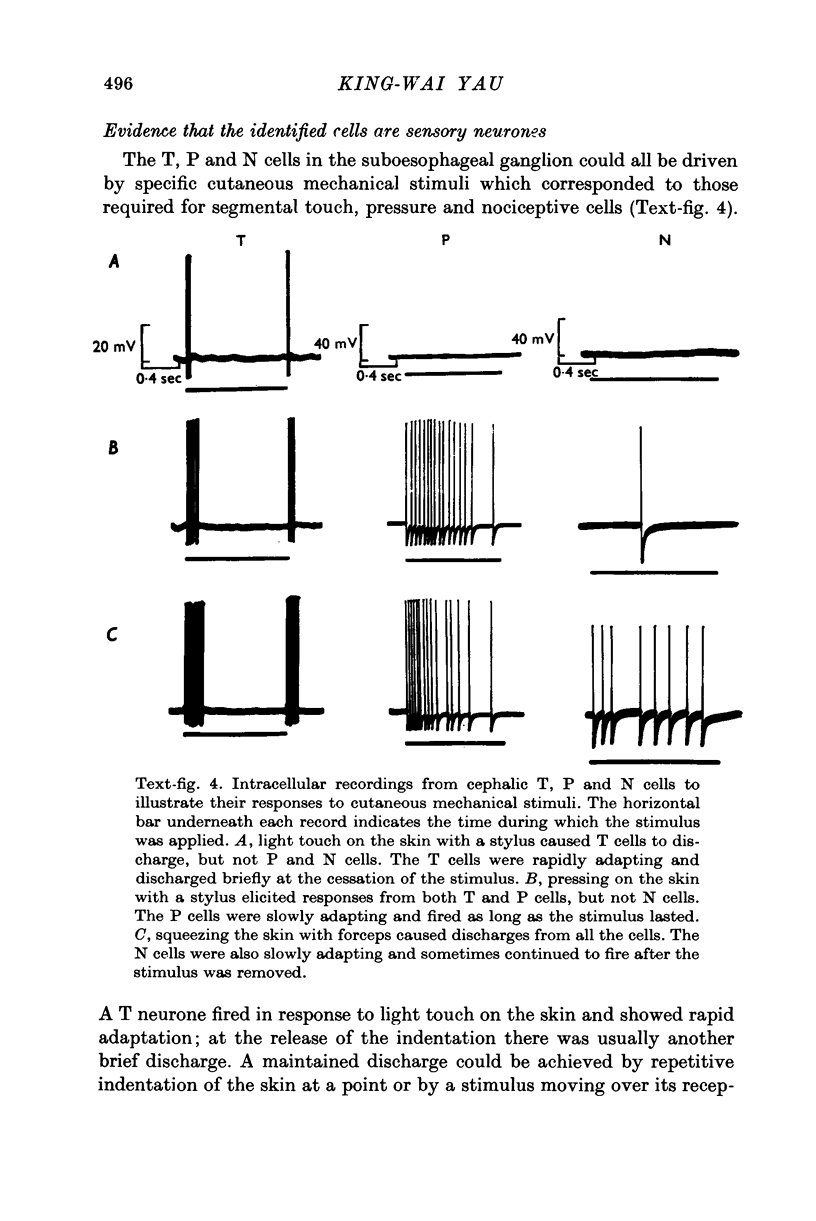
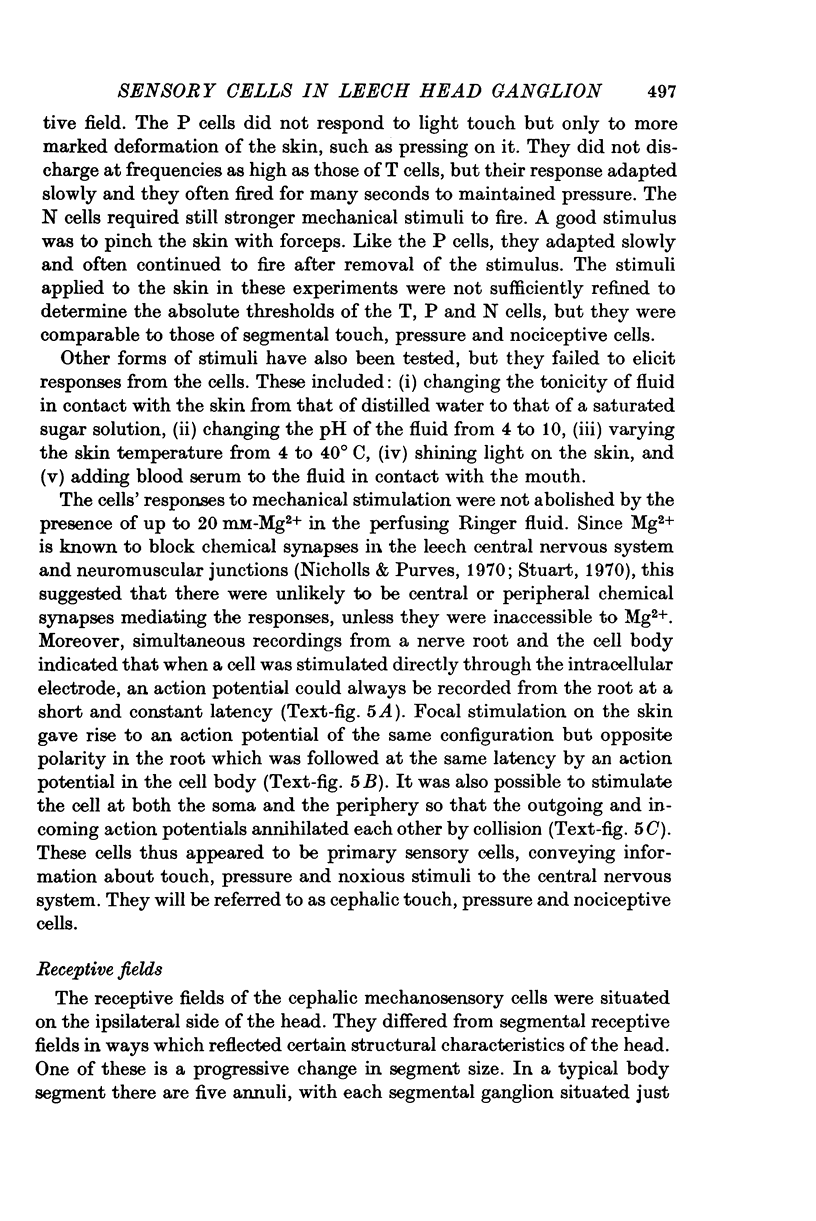
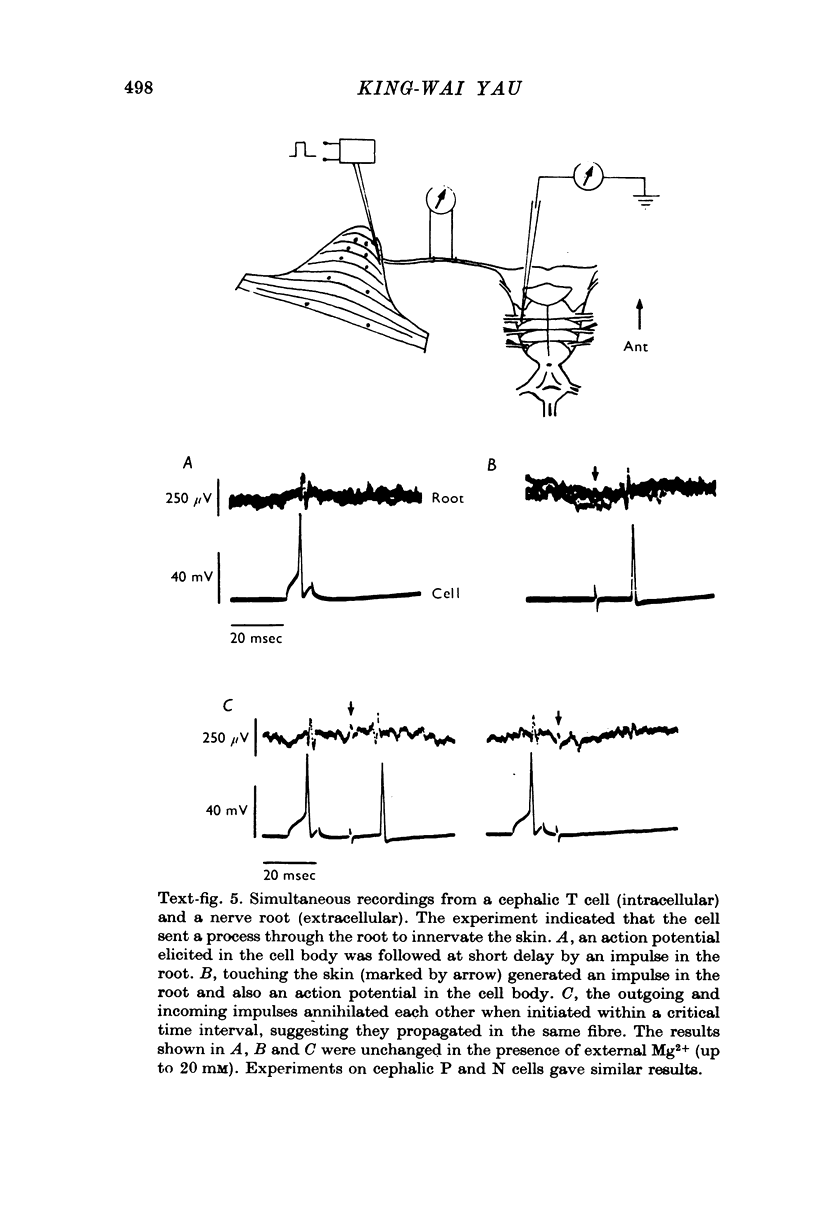
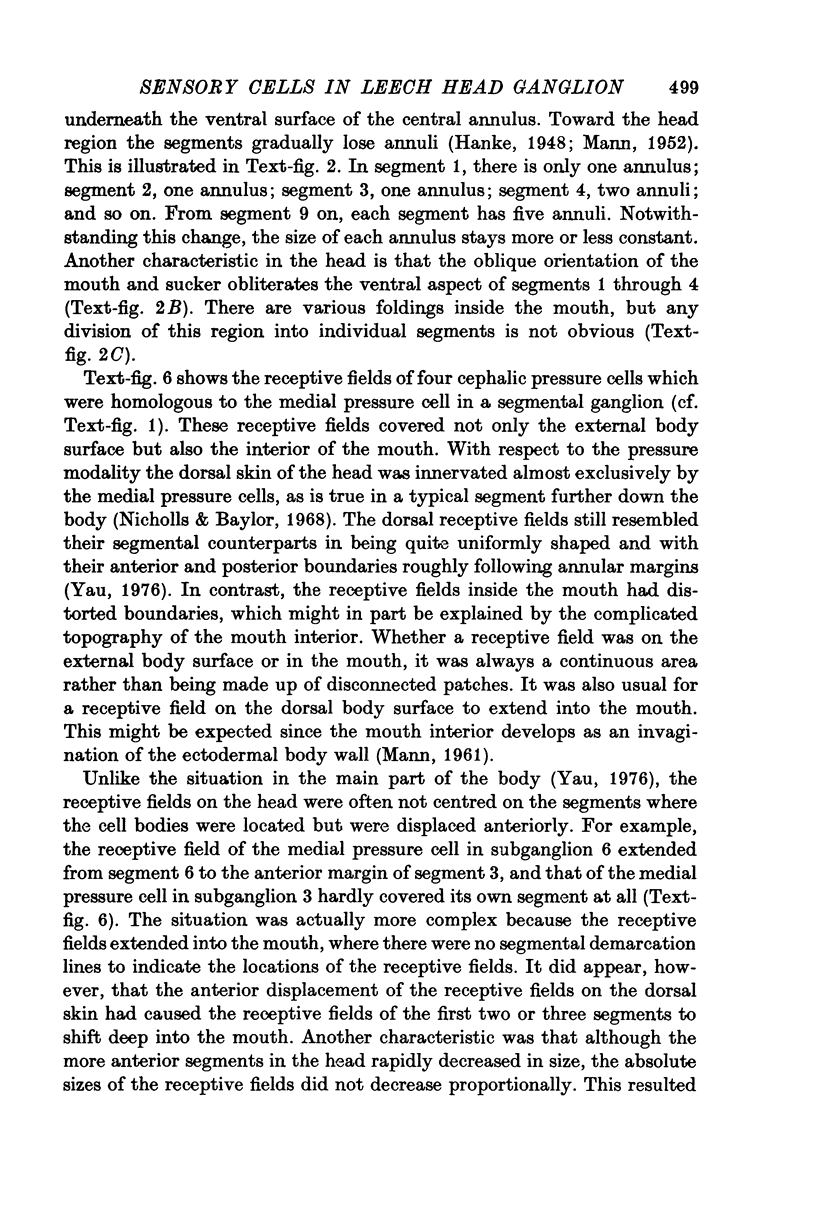
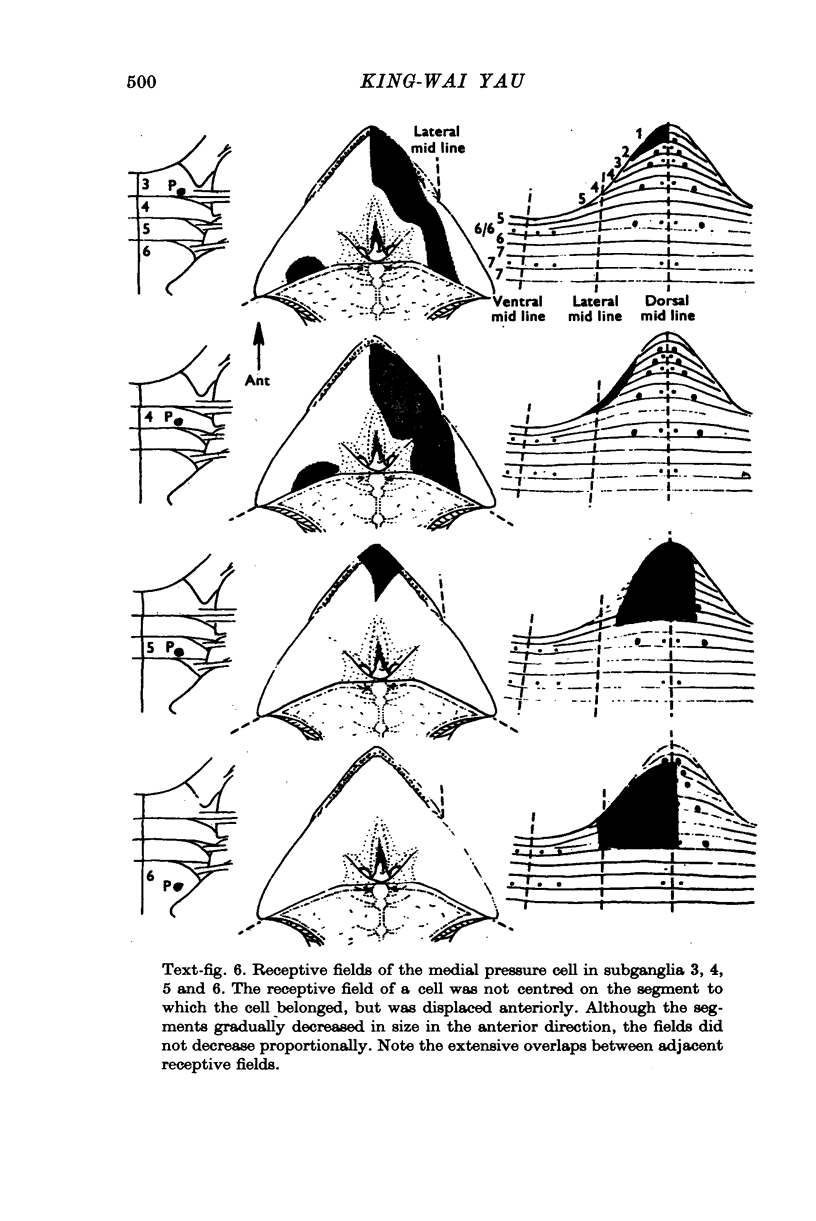
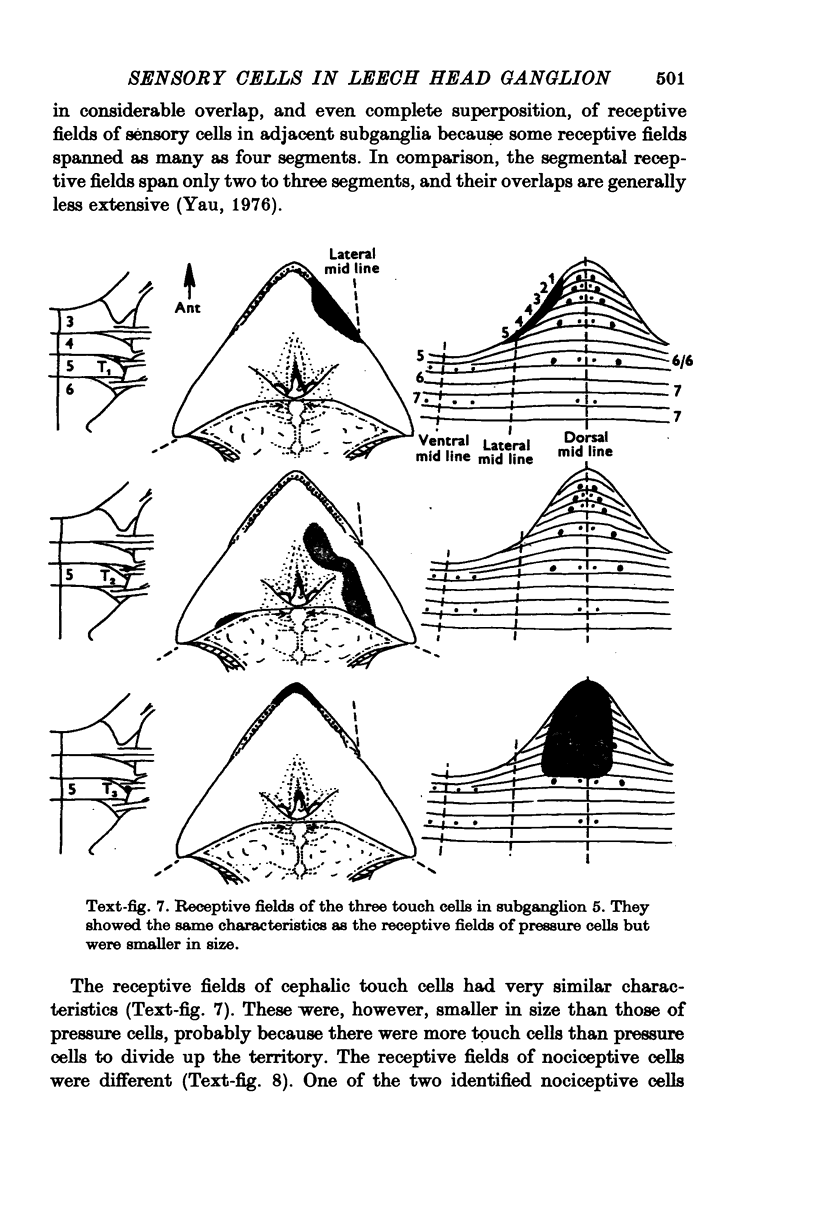
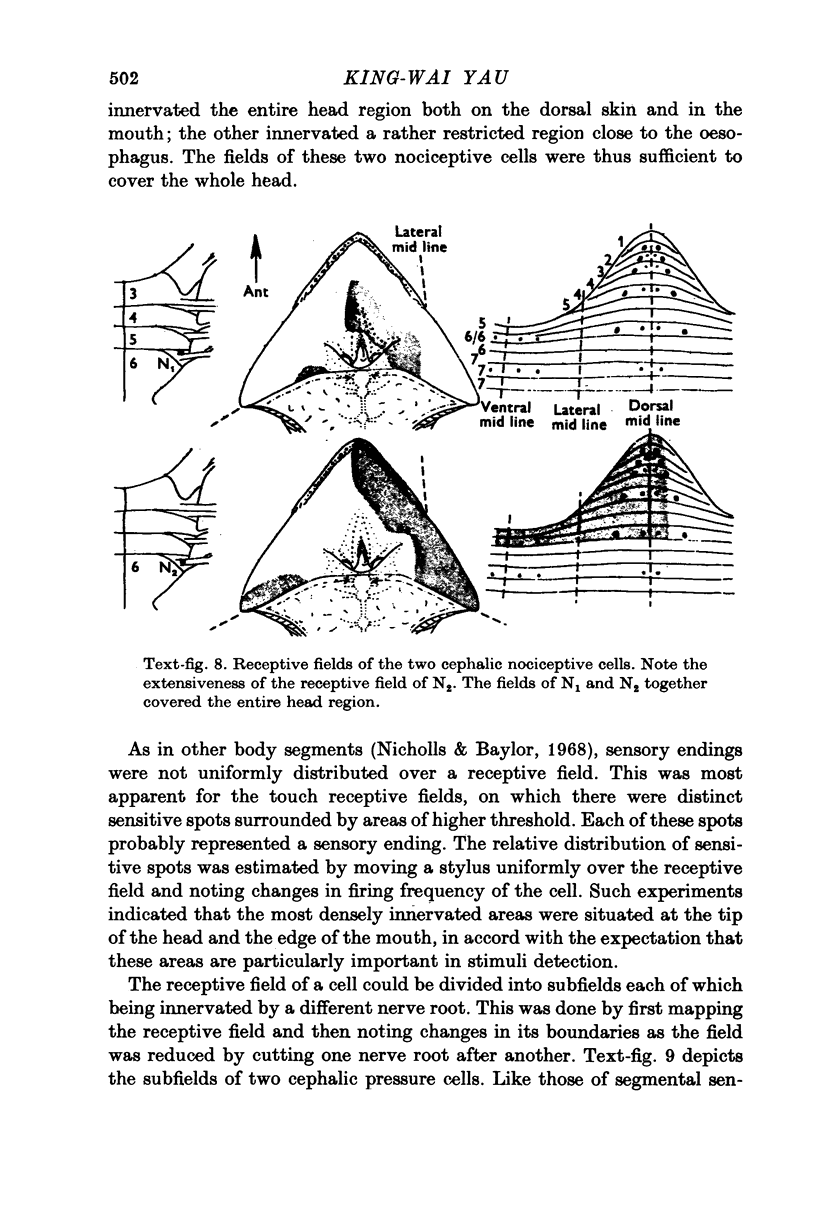
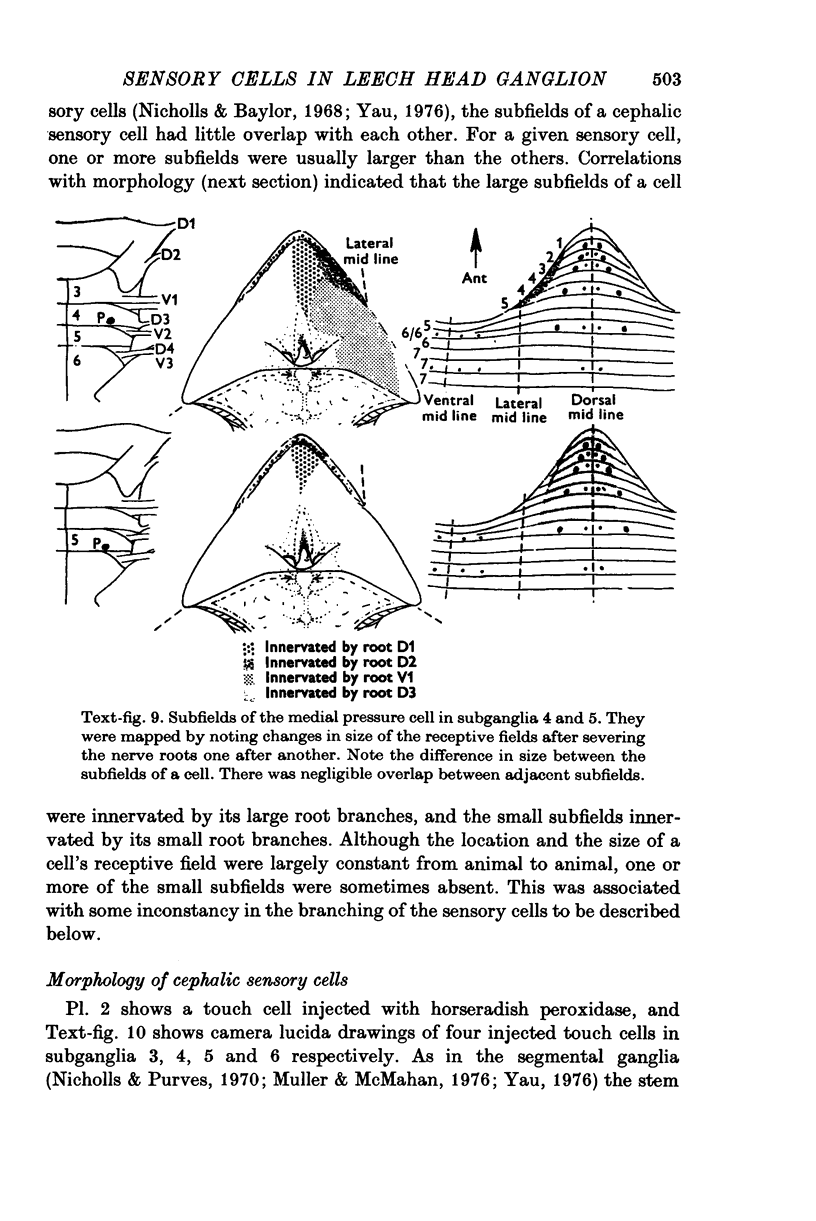
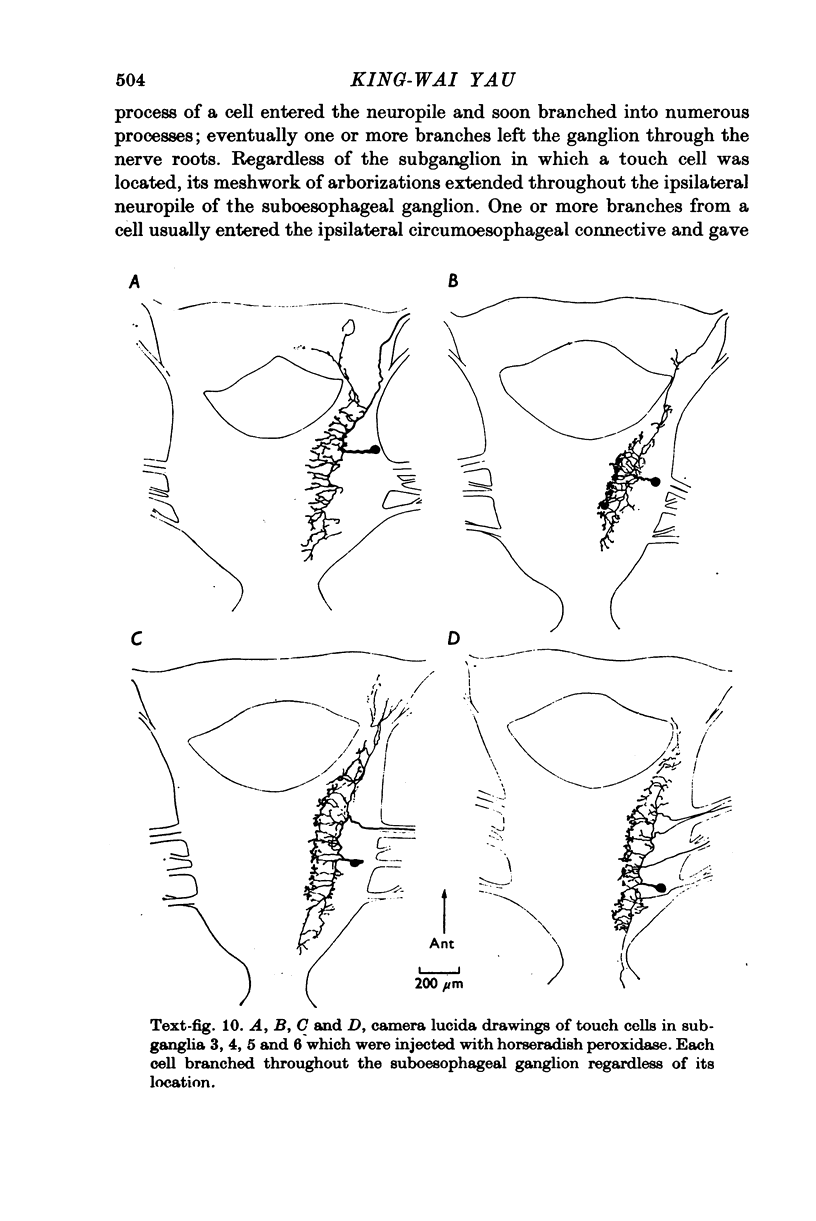

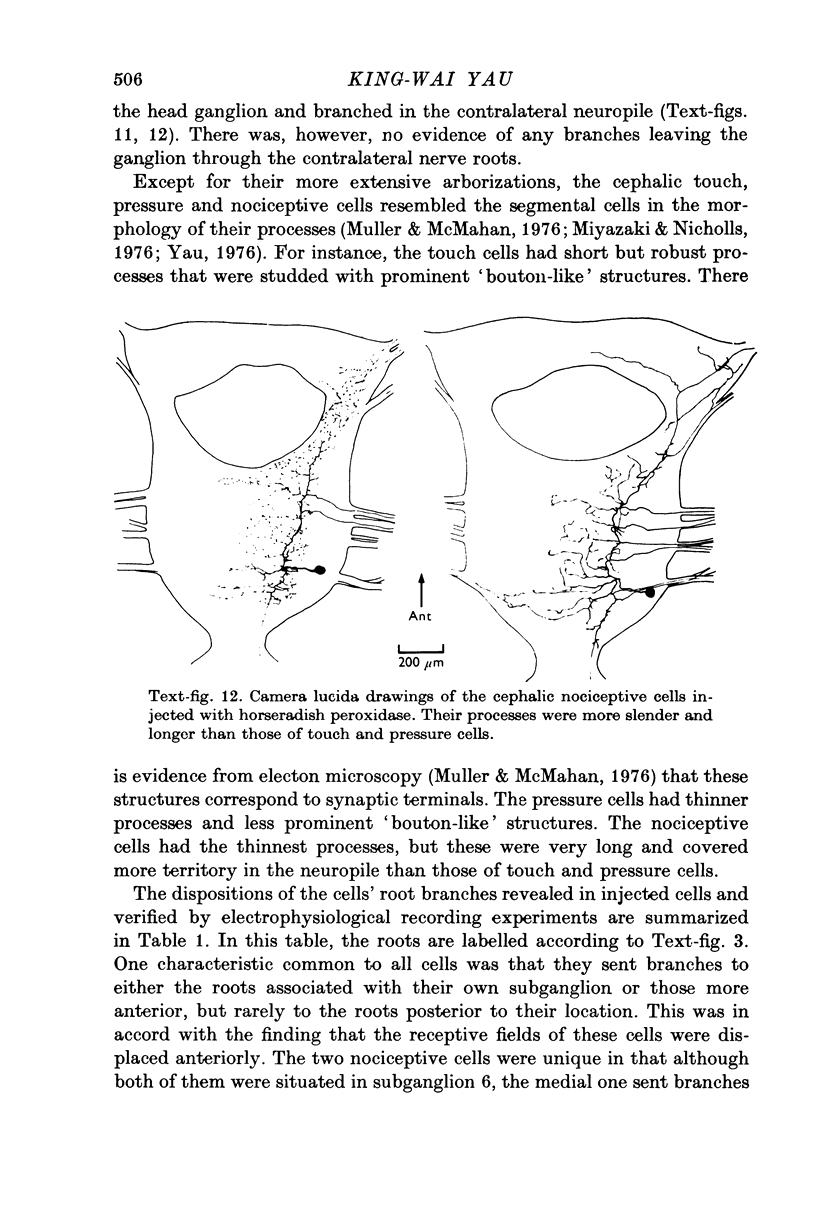
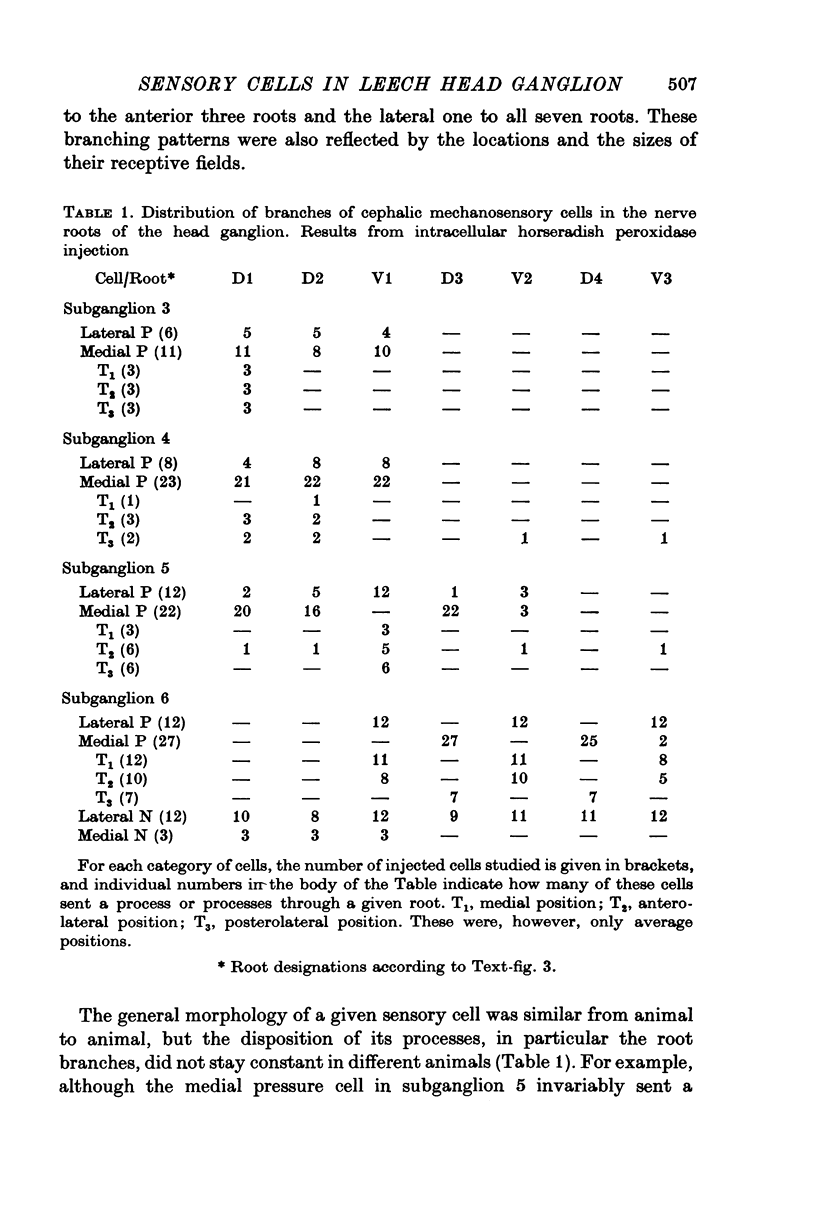
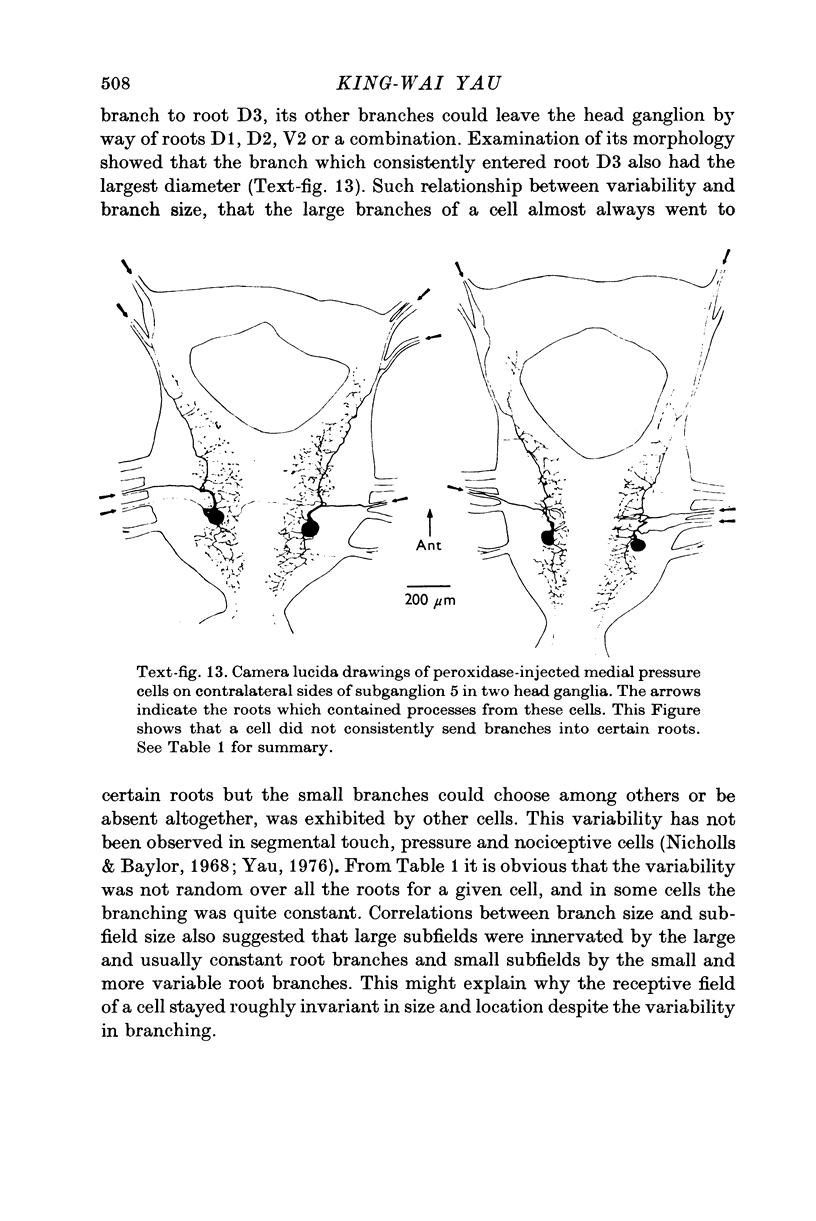
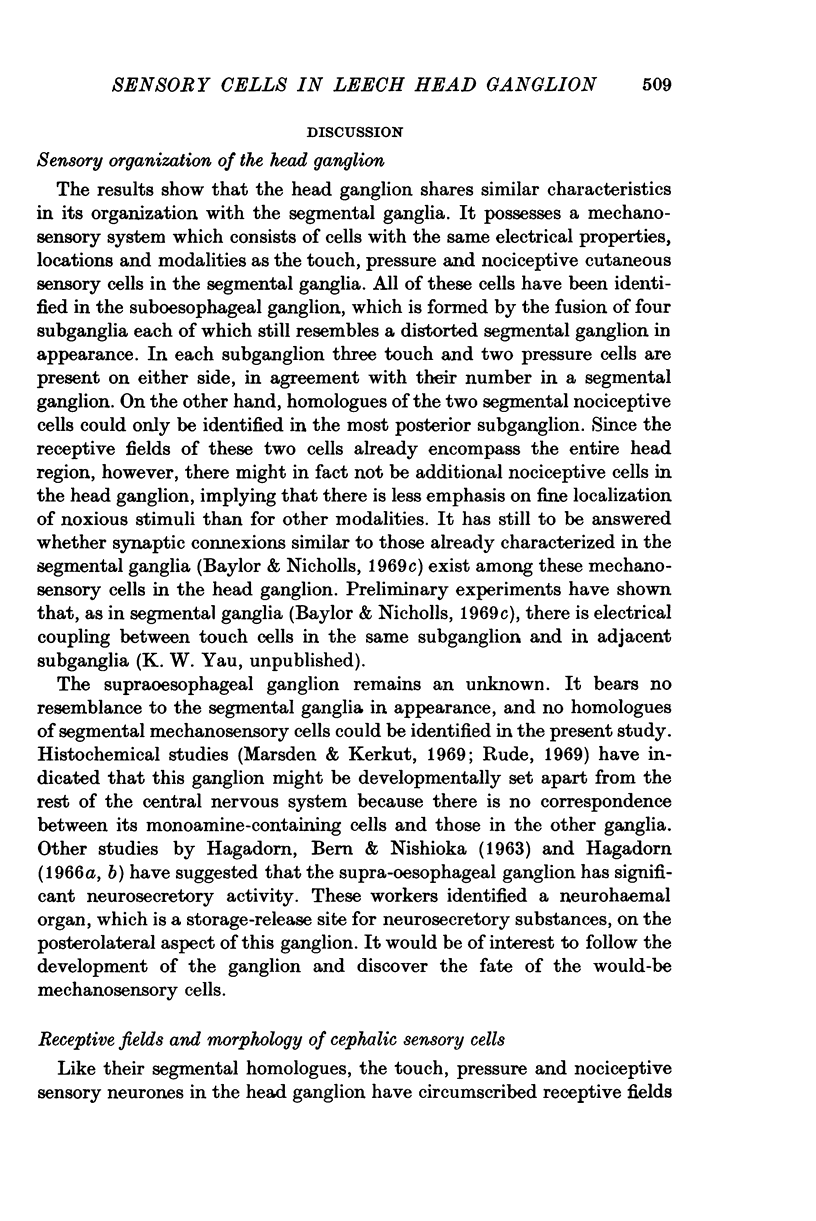
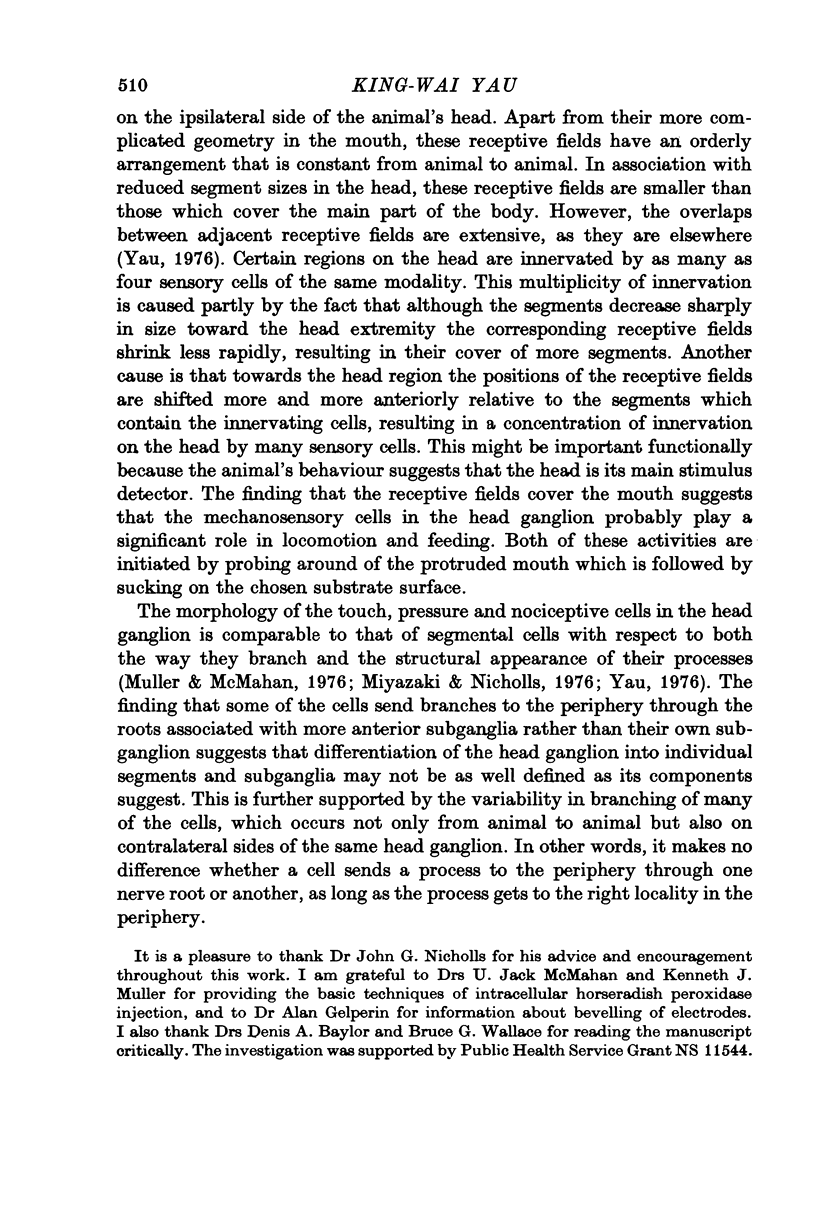
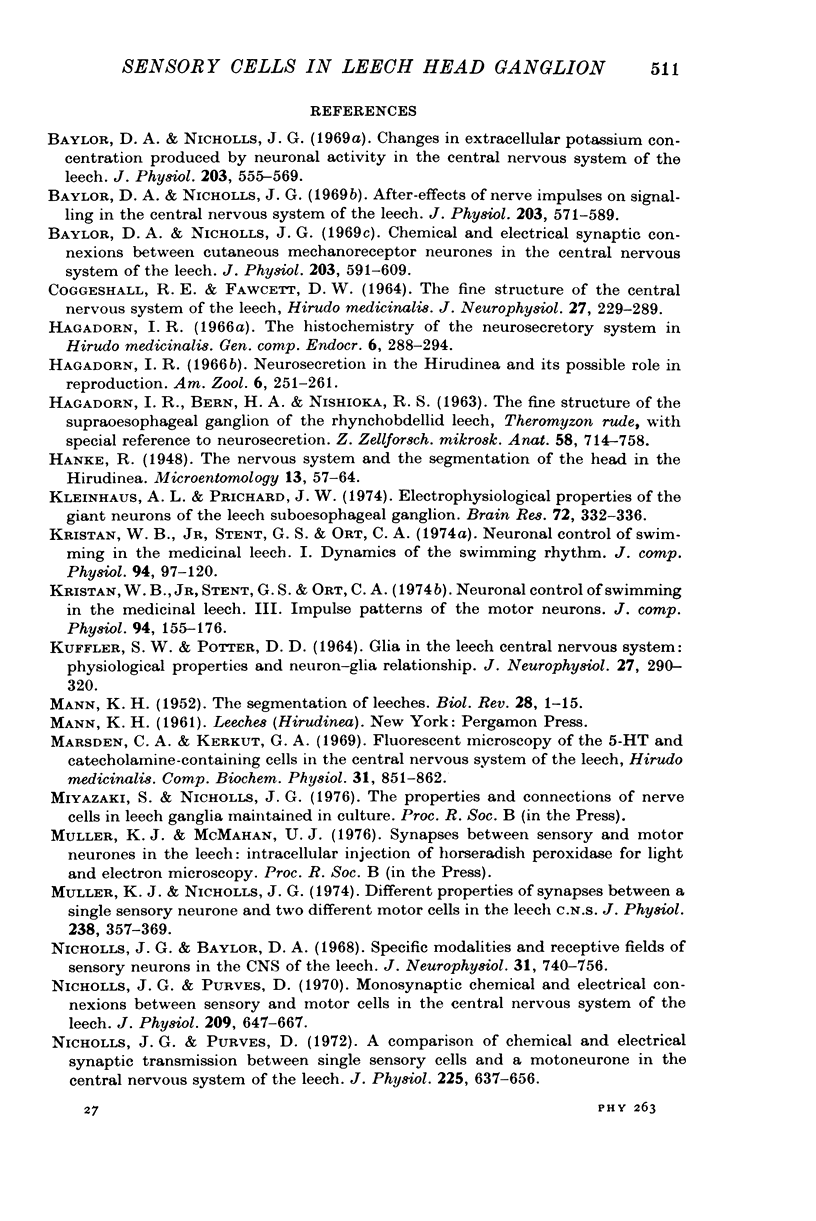
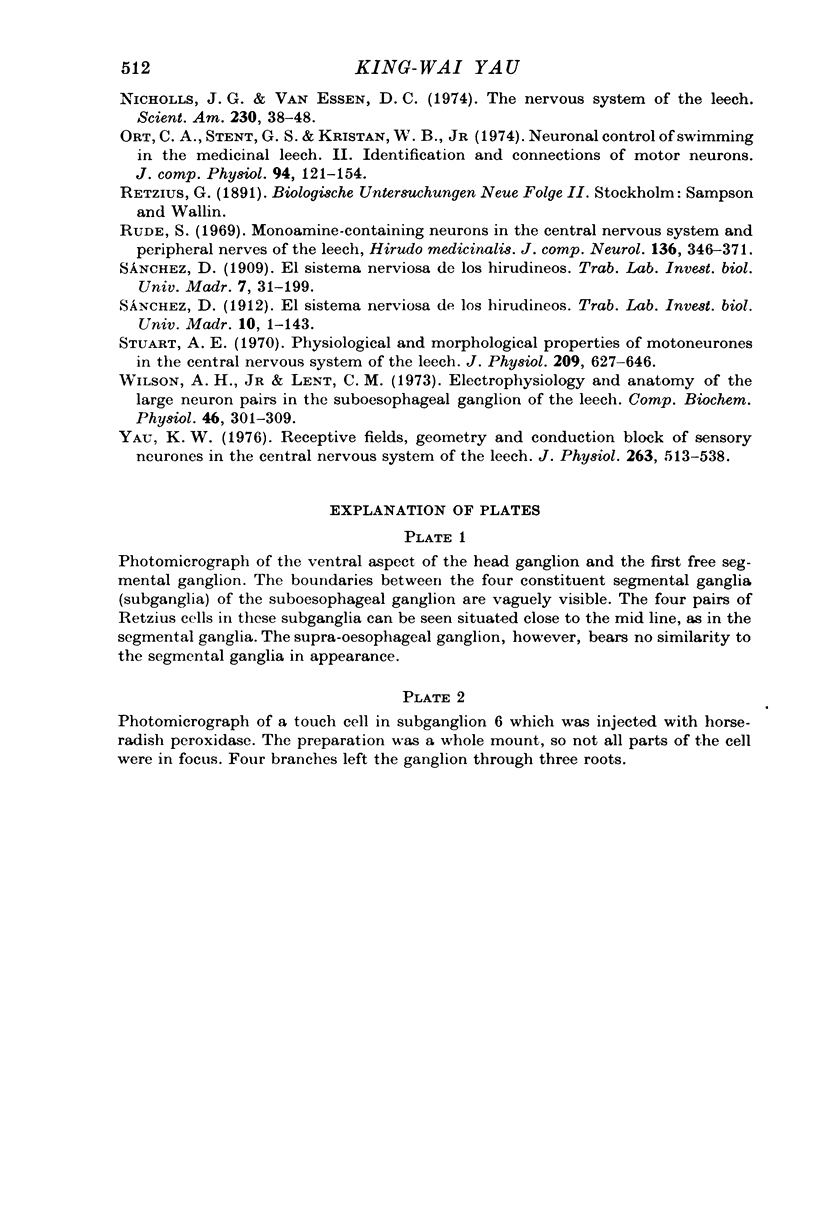
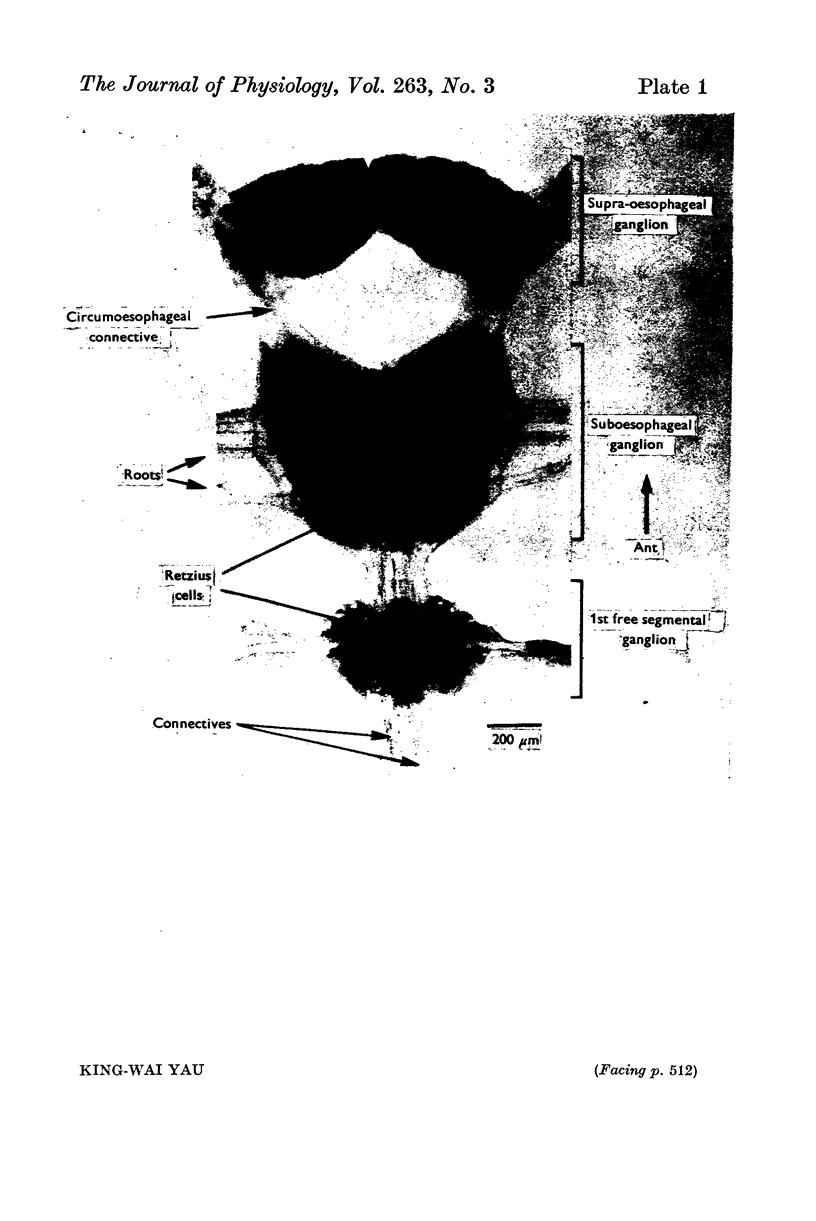
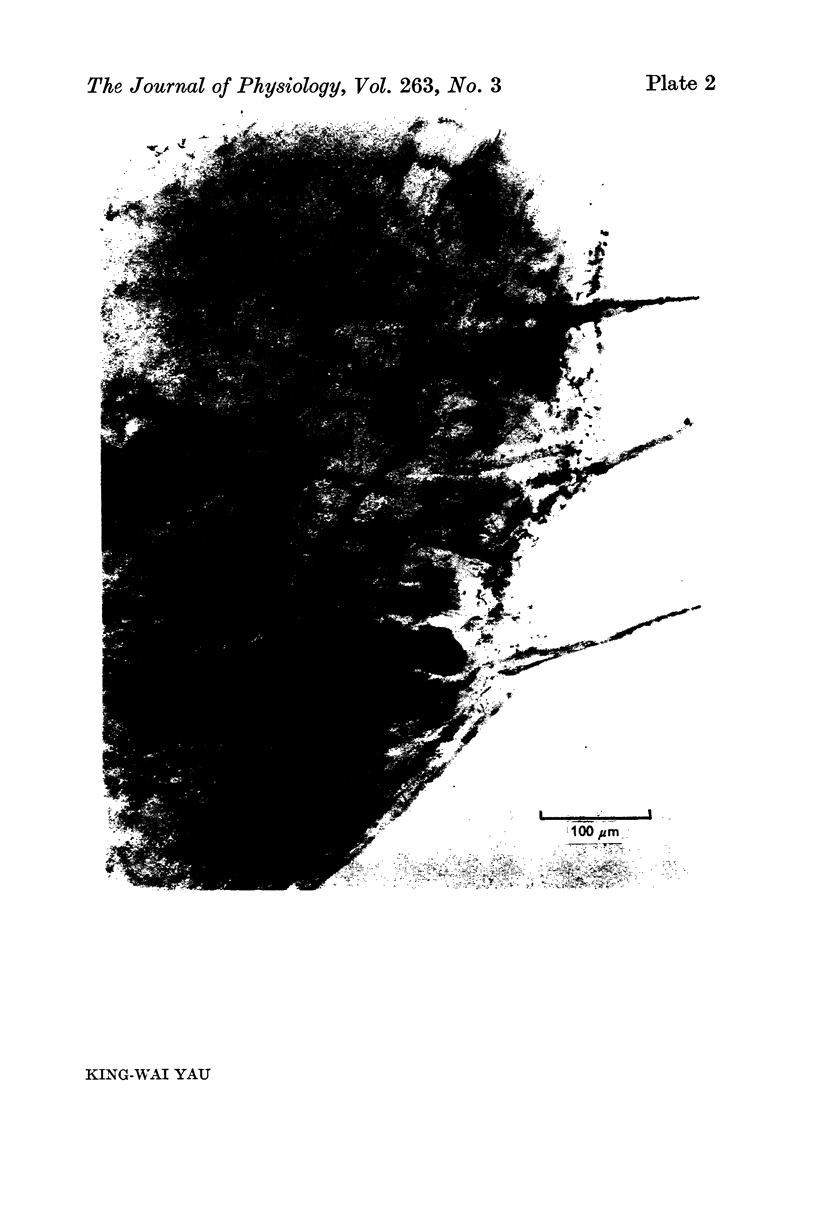
Images in this article
Selected References
These references are in PubMed. This may not be the complete list of references from this article.
- Baylor D. A., Nicholls J. G. After-effects of nerve impulses on signalling in the central nervous system of the leech. J Physiol. 1969 Aug;203(3):571–589. doi: 10.1113/jphysiol.1969.sp008880. [DOI] [PMC free article] [PubMed] [Google Scholar]
- Baylor D. A., Nicholls J. G. Changes in extracellular potassium concentration produced by neuronal activity in the central nervous system of the leech. J Physiol. 1969 Aug;203(3):555–569. doi: 10.1113/jphysiol.1969.sp008879. [DOI] [PMC free article] [PubMed] [Google Scholar]
- Baylor D. A., Nicholls J. G. Chemical and electrical synaptic connexions between cutaneous mechanoreceptor neurones in the central nervous system of the leech. J Physiol. 1969 Aug;203(3):591–609. doi: 10.1113/jphysiol.1969.sp008881. [DOI] [PMC free article] [PubMed] [Google Scholar]
- COGGESHALL R. E., FAWCETT D. W. THE FINE STRUCTURE OF THE CENTRAL NERVOUS SYSTEM OF THE LEECH, HIRUDO MEDICINALIS. J Neurophysiol. 1964 Mar;27:229–289. doi: 10.1152/jn.1964.27.2.229. [DOI] [PubMed] [Google Scholar]
- Hagadorn I. R. Neurosecretion in the Hirudinea and its possible role in reproduction. Am Zool. 1966 May;6(2):251–261. doi: 10.1093/icb/6.2.251. [DOI] [PubMed] [Google Scholar]
- Hagadorn I. R. The histochemistry of the neurosecretory system in Hirudo medicinalis. Gen Comp Endocrinol. 1966 Apr;6(2):288–294. [PubMed] [Google Scholar]
- KUFFLER S. W., POTTER D. D. GLIA IN THE LEECH CENTRAL NERVOUS SYSTEM: PHYSIOLOGICAL PROPERTIES AND NEURON-GLIA RELATIONSHIP. J Neurophysiol. 1964 Mar;27:290–320. doi: 10.1152/jn.1964.27.2.290. [DOI] [PubMed] [Google Scholar]
- Kleinhaus A. L., Prichard J. W. Electrophysiological properties of the giant neurons of the leech subesophageal ganglion. Brain Res. 1974 Jun 7;72(2):332–336. doi: 10.1016/0006-8993(74)90876-2. [DOI] [PubMed] [Google Scholar]
- Marsden C. A., Kerkut G. A. Fluorescent microscopy of the 5HT- and catecholamine-containing cells in the central nervous system of the leech Hirudo medicinalis. Comp Biochem Physiol. 1969 Dec 15;31(6):851–862. doi: 10.1016/0010-406x(69)91795-2. [DOI] [PubMed] [Google Scholar]
- Muller K. J., Nicholls J. G. Different properties of synapses between a single sensory neurone and two different motor cells in the leech C.N.S. J Physiol. 1974 Apr;238(2):357–369. doi: 10.1113/jphysiol.1974.sp010529. [DOI] [PMC free article] [PubMed] [Google Scholar]
- Nicholls J. G., Baylor D. A. Specific modalities and receptive fields of sensory neurons in CNS of the leech. J Neurophysiol. 1968 Sep;31(5):740–756. doi: 10.1152/jn.1968.31.5.740. [DOI] [PubMed] [Google Scholar]
- Nicholls J. G., Purves D. A comparison of chemical and electrical synaptic transmission between single sensory cells and a motoneurone in the central nervous system of the leech. J Physiol. 1972 Sep;225(3):637–656. doi: 10.1113/jphysiol.1972.sp009961. [DOI] [PMC free article] [PubMed] [Google Scholar]
- Nicholls J. G., Purves D. Monosynaptic chemical and electrical connexions between sensory and motor cells in the central nervous system of the leech. J Physiol. 1970 Aug;209(3):647–667. doi: 10.1113/jphysiol.1970.sp009184. [DOI] [PMC free article] [PubMed] [Google Scholar]
- Nicholls J. G., Van Essen D. The nervous system of the leech. Sci Am. 1974 Jan;230(1):38–48. doi: 10.1038/scientificamerican0174-38. [DOI] [PubMed] [Google Scholar]
- Stuart A. E. Physiological and morphological properties of motoneurones in the central nervous system of the leech. J Physiol. 1970 Aug;209(3):627–646. doi: 10.1113/jphysiol.1970.sp009183. [DOI] [PMC free article] [PubMed] [Google Scholar]
- Yau K. W. Receptive fields, geometry and conduction block of sensory neurones in the central nervous system of the leech. J Physiol. 1976 Dec;263(3):513–538. doi: 10.1113/jphysiol.1976.sp011643. [DOI] [PMC free article] [PubMed] [Google Scholar]



